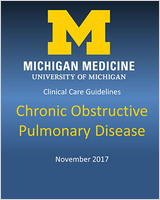| Inhaled short-acting beta-2 agonists (SABA) [bronchodilator] |
|---|
| Albuterol HFA (90 mcg/puff) | ProAir, Proventil, Ventolin | 4–8 puffs inhaled every 20 min x 4 h as needed, then 4–8 puffs inhaled every 1–4 h as needed | NA | $61 (all) |
| Albuterol nebulizer solution; either 0.083% ready to use (2.5 mg/3 mL) or 0.5% (2.5 mg/0.5 mL) | | 2.5–5 mg via nebulizer every 20 min x 3 doses, then 5–10 mg nebulized every 1–4 h as needed | $5 | NA |
| Levalbuterol tartrate HFA (45 mcg/puff) | Xopenex | 2 puffs inhaled every 4–6 h as needed | $10 | $74 |
| Levalbuterol nebulizer solution (1.25 mg/3 mL ready to use, or 1.25 mg/0.5 mL) | Xopenex | 0.63–1.25 mg via nebulizer every 8 h as needed | $182 | $320 |
| Inhaled anticholinergic (short-acting muscarinic antagonist = SAMA) b [bronchodilator] |
|---|
| Ipratropium HFA (17 mcg/puff) | Atrovent | 2–4 puffs inhaled every 6 h as needed | NA | $395 |
| Ipratropium nebulizer solution (500 mcg/2.5 mL) | Atrovent | 500 mcg via nebulizer every 6 h as needed | $18 | NA |
| Oral corticosteroids c [anti-inflammatory] |
|---|
| Prednisone: 1, 2.5, 5, 10, 20, 50 mg tabs; 1 mg/mL liquid | | 40 mg/day for 5–7 days. Regimens may vary in dosage strength and duration | $6 | $26 |
| Prednisolone: 5 mg tabs; 1 mg/mL, 2 mg/mL 3 mg/mL, 4 mg/mL liquid | | 40 mg/day for 5–7 days. Regimens may vary in dosage strength and duration | $13 | $35 |
| Antibiotics d |
|---|
| Patients without risk factors for poor outcomes
e (in order of preference) |
|---|
Azithromycin
250, 500 mg tabs;
100, 200 mg/5 mL liquid | Zithromax | 500 mg orally on day 1, then 250 mg orally daily on days 2–5 | $8 (tab)
$12 (liquid) | $63 (tab)
$131 (liquid) |
| Cephalosporins (2nd or 3rd generation) |
|---|
Cefdinir
300 mg caps;
125, 250 mg/5 mL liquid | Omnicef | 300 mg orally twice daily | $60 (tab)
$8 (liquid) | $276 (tab)
$90 (liquid) |
Cefpodoxime
100, 200 mg tabs;
100 mg/5 mL liquid | NA | 200 mg orally twice daily | $480 (tab)
$79 (liquid) | NA
NA |
Cefprozil
250, 500 mg tabs;
250 mg/5 mL liquid | NA | 500 mg orally twice daily | $122 (tab)
$60 (liquid) | NA
NA |
Doxycycline hyclate
100 mg tabs | Vibramycin capsule | 100 mg orally twice daily | $38 | $645 |
Doxycycline calcium
50 mg/5 mL liquid | Vibramycin syrup | 100 mg orally twice daily | NA | $452 |
Trimethoprim/sulfamethoxazole
80/400, 160/800 mg tabs;
40/200 mg/5 mL liquid | Bactrim, Septra
Sulfatrim (liquid) | 160/800 mg (DS tablet) orally twice daily | $14 (all tabs)
$240 (liq) | $104
NA
NA (liq) |
| Patients with risk factors for poor outcomes
e (no particular order) |
|---|
Amoxicillin/clavulanate
250/125, 500/125, 875/125 mg tabs; 200/28.5 mg/5 mL, 400/57 mg/5 mL liquid | Augmentin | 500 mg orally every 8 h or 875 mg orally every 12 h | $62 (tab)
$20 (liq) | $208 (tab)
$62 (liq) |
Levofloxacin
250, 500, 750 mg tabs;
25 mg/mL liquid | Levaquin f | 500 mg orally daily | $12 (tab)
$17 (liq) | $973 (tab)
$408 (liq) |
| Patients at risk for infection with
Pseudomonas aeruginosa
g (no particular order) |
|---|
Levofloxacin
250, 500, 750 mg tabs;
25 mg/mL liquid | Levaquin | 750 mg orally daily | $21 | $1820 |
